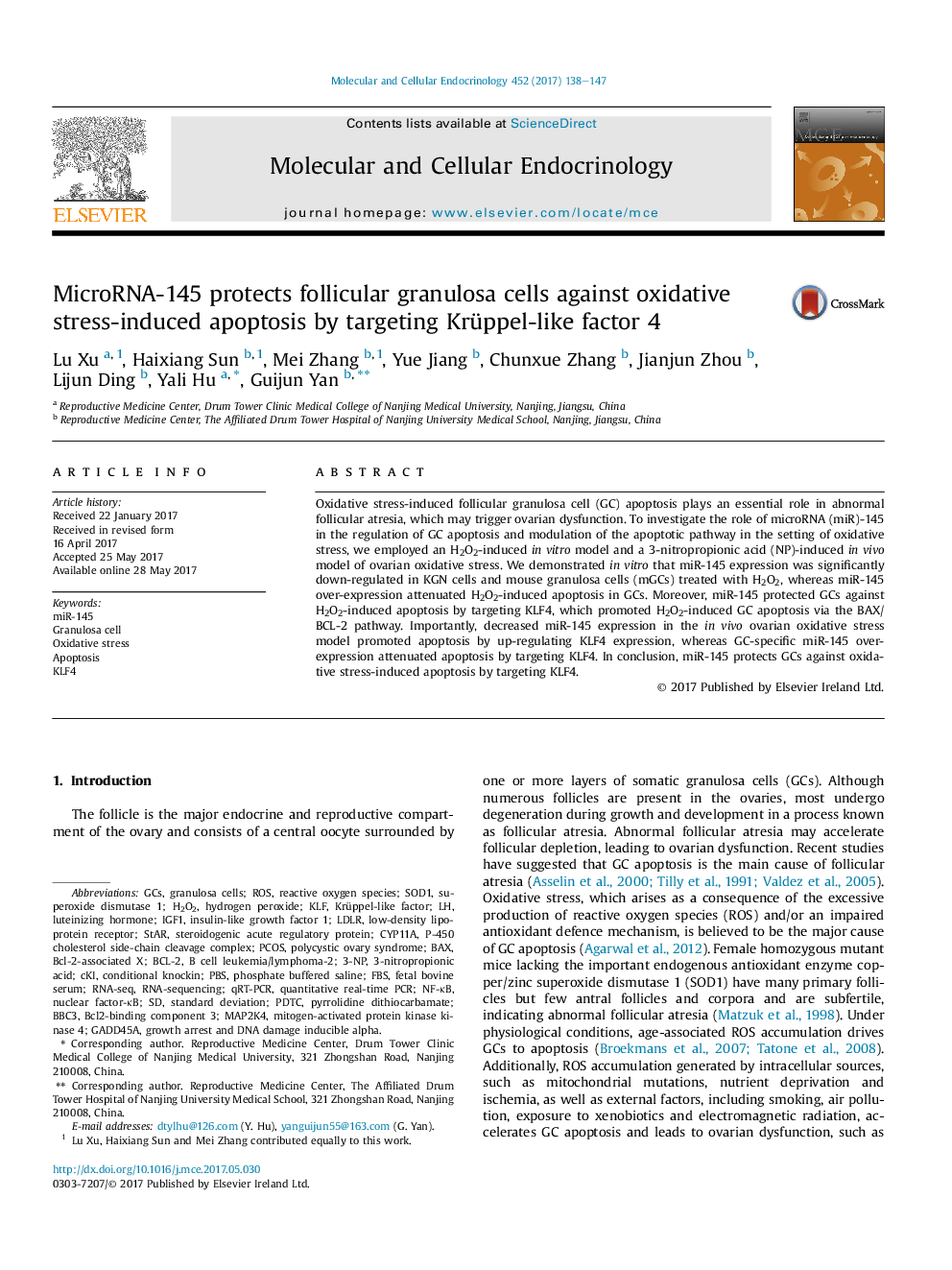| Article ID | Journal | Published Year | Pages | File Type |
|---|---|---|---|---|
| 5534040 | Molecular and Cellular Endocrinology | 2017 | 10 Pages |
â¢miR-145 protects granulosa cells against H2O2-induced apoptosis by targeting KLF4.â¢KLF4 promotes H2O2-induced apoptosis in granulosa cells via the BAX/BCL-2 pathway.â¢Decreased miR-145 expression promotes granulosa cell apoptosis in the in vivo ovarian oxidative stress model.â¢miR-145 over-expression attenuates granulosa cell apoptosis by targeting KLF4 in the in vivo ovarian oxidative stress model.
Oxidative stress-induced follicular granulosa cell (GC) apoptosis plays an essential role in abnormal follicular atresia, which may trigger ovarian dysfunction. To investigate the role of microRNA (miR)-145 in the regulation of GC apoptosis and modulation of the apoptotic pathway in the setting of oxidative stress, we employed an H2O2-induced in vitro model and a 3-nitropropionic acid (NP)-induced in vivo model of ovarian oxidative stress. We demonstrated in vitro that miR-145 expression was significantly down-regulated in KGN cells and mouse granulosa cells (mGCs) treated with H2O2, whereas miR-145 over-expression attenuated H2O2-induced apoptosis in GCs. Moreover, miR-145 protected GCs against H2O2-induced apoptosis by targeting KLF4, which promoted H2O2-induced GC apoptosis via the BAX/BCL-2 pathway. Importantly, decreased miR-145 expression in the in vivo ovarian oxidative stress model promoted apoptosis by up-regulating KLF4 expression, whereas GC-specific miR-145 over-expression attenuated apoptosis by targeting KLF4. In conclusion, miR-145 protects GCs against oxidative stress-induced apoptosis by targeting KLF4.
